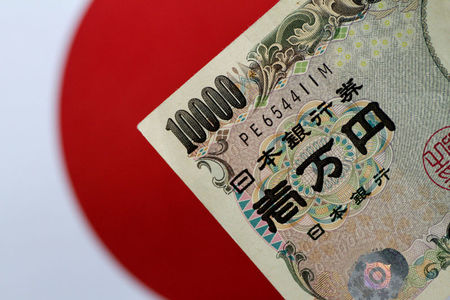Forex
Asia FX weakens, yen slides after election quashes rate hike bets

Investing.com– Most Asian currencies weakened on Monday with the Japanese yen sliding to a three-month low amid bets that the loss of a parliamentary majority for Japan’s ruling party diminished the prospect of higher interest rates in the country.
Risk appetite was buoyed by Israel launching a less severe strike on Iran than traders were fearing, with oil prices falling sharply on this notion.
But this translated into limited gains for regional currencies, as growing expectations of smaller U.S. interest rate cuts kept traders biased towards the dollar. The greenback rose to a near three-month high on Monday.
Anticipation of several key economic readings this week- from Asia and the U.S.- still kept overall risk appetite subdued.
Japanese yen weakens, USDJPY surges after election upset
The Japanese yen was the worst performer in Asia on Monday, with the pair rising 0.9% to 153.68 yen- its highest level since late-July.
The yen was battered by local media reports showing a coalition led by Japan’s ruling Liberal Democratic Party did not win a majority in the parliamentary elections held on Sunday.
The LDP will now have to seek coalitions with smaller regional parties to retain power- a scenario that presents a more fractured political outlook for Japan.
Traders bet that increased political uncertainty will keep the Bank of Japan from hiking interest rates further- a scenario that bodes poorly for the yen.
The BOJ is set to and is widely expected to keep rates unchanged, after two hikes earlier in 2024. Recent economic readings also showed Japanese private spending and inflation was cooling after an uptick earlier in the year.
Dollar strong, Asia FX drifts lower with econ. data on tap
Broader Asian currencies mostly weakened, while the dollar rose to near three-month highs before a string of key economic readings this week.
The and both added 0.3% each. U.S. , data for the third quarter and data- the Federal Reserve’s preferred inflation gauge- is due later this week.
In Asian markets, the Chinese yuan’s pair rose 0.2% to an over two-month high. Chinese x data is due later in the week, and is expected to reflect some effects of the barrage of stimulus measures rolled out by Beijing over the past month.
The Australian dollar’s pair fell 0.3%, with focus on upcoming consumer inflation data for the third quarter. The South Korean won’s pair was flat, while the Singapore dollar’s pair rose 0.3%.
The Indian rupee’s pair was flat and remained close to record highs above 84 rupees.

 Forex3 years ago
Forex3 years agoForex Today: the dollar is gaining strength amid gloomy sentiment at the start of the Fed’s week

 Forex3 years ago
Forex3 years agoUnbiased review of Pocket Option broker

 Forex3 years ago
Forex3 years agoDollar to pound sterling exchange rate today: Pound plummeted to its lowest since 1985

 Forex3 years ago
Forex3 years agoHow is the Australian dollar doing today?

 Cryptocurrency3 years ago
Cryptocurrency3 years agoWhat happened in the crypto market – current events today

 World3 years ago
World3 years agoWhy are modern video games an art form?

 Commodities3 years ago
Commodities3 years agoCopper continues to fall in price on expectations of lower demand in China

 Economy3 years ago
Economy3 years agoCrude oil tankers double in price due to EU anti-Russian sanctions





















